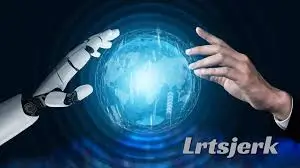In the world of complex algorithms and advanced computational methods, LRtsJerk has emerged as a significant topic of interest. This guide delves into the intricacies of LRtsJerk, its applications, benefits, and challenges, providing a comprehensive understanding for enthusiasts and professionals alike.
What is LRtsJerk?
LRtsJerk stands for Least Residual Time Smoothing Jerk, a computational technique used primarily in optimizing and smoothing the motion trajectories in robotics and automation. It aims to minimize the “jerk,” or the rate of change of acceleration, to ensure smooth and efficient motion paths.
Key Components
- Least Residual Time (LRT): Refers to the optimization criterion that focuses on minimizing the time deviations from the planned trajectory.
- Smoothing: The process of making motion paths more gradual and continuous, reducing abrupt changes in direction and speed.
- Jerk: The derivative of acceleration, representing the rate of change of acceleration over time. Minimizing jerk leads to smoother and more controlled movements.
Applications of LRtsJerk
LRtsJerk finds its applications across various fields, enhancing the performance and efficiency of systems that require precise motion control.
Robotics
In robotics, LRtsJerk is used to optimize the movements of robotic arms and mobile robots.
- Industrial Robots: Ensures smooth and accurate operations in assembly lines and manufacturing processes.
- Service Robots: Enhances the performance of robots used in healthcare, hospitality, and other service sectors.
Automated Vehicles
For autonomous vehicles, minimizing jerk is crucial for passenger comfort and safety.
- Self-Driving Cars: Improves the driving experience by ensuring smooth acceleration and deceleration.
- Drones: Enhances the stability and control of drones during flight, especially in complex maneuvers.
Computer Graphics and Animation
In computer graphics, LRtsJerk helps in creating realistic animations by ensuring smooth transitions and movements.
- Character Animation: Enhances the fluidity and realism of animated characters.
- Simulation: Improves the accuracy and visual appeal of simulations in various applications, such as gaming and virtual reality.
Benefits of LRtsJerk
Implementing LRtsJerk offers numerous advantages that contribute to the efficiency and effectiveness of various systems.
Enhanced Smoothness
By minimizing jerk, LRtsJerk ensures smoother transitions and movements, reducing wear and tear on mechanical components and enhancing user comfort.
Improved Precision
Optimizing motion trajectories leads to higher precision and accuracy, essential in applications requiring meticulous movements.
Energy Efficiency
Smoother movements often result in reduced energy consumption, making systems more efficient and environmentally friendly.
Challenges and Limitations
Despite its benefits, LRtsJerk also presents several challenges that need to be addressed for optimal implementation.
Computational Complexity
The algorithms used in LRtsJerk are computationally intensive, requiring significant processing power and time, especially for complex systems.
Implementation Difficulty
Integrating LRtsJerk into existing systems can be challenging, necessitating specialized knowledge and expertise in both the theoretical and practical aspects of the technique.
Real-Time Processing
Achieving real-time processing with LRtsJerk can be difficult, particularly in high-speed applications where immediate responses are crucial.
Future Trends and Developments
As technology continues to evolve, LRtsJerk is expected to advance, offering even more refined and efficient solutions for motion optimization.
 Artificial Intelligence Integration
Artificial Intelligence Integration
Integrating artificial intelligence (AI) with LRtsJerk can enhance its capabilities, enabling more adaptive and intelligent motion control systems.
- Machine Learning: Using machine learning algorithms to predict and optimize motion paths dynamically.
- Deep Learning: Employing deep learning techniques to handle more complex and intricate motion optimization tasks.
Improved Algorithms
Ongoing research and development aim to create more efficient and less computationally demanding algorithms for LRtsJerk.
- Hybrid Approaches: Combining LRtsJerk with other optimization techniques to achieve better performance.
- Algorithmic Enhancements: Developing new methods to reduce computational complexity and improve real-time processing capabilities.
Broader Applications
The principles of LRtsJerk are likely to be applied in new and emerging fields, expanding its scope and utility.
- Biomechanics: Optimizing the movements of prosthetics and exoskeletons for enhanced user experience.
- Space Exploration: Ensuring smooth and precise control of spacecraft and rovers in challenging environments.
Conclusion
LRtsJerk represents a significant advancement in the field of motion optimization, offering numerous benefits across various applications. Understanding its principles, applications, and challenges is crucial for leveraging its potential in enhancing system performance and efficiency. As technology continues to advance, LRtsJerk is poised to play an increasingly important role in the future of robotics, automation, and beyond.



